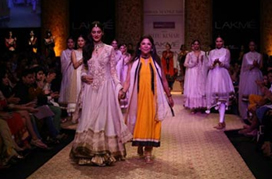The dialogue around sustainability has been going on for a few years, not really making significant inroads, mostly limited to lip service, unverified claims, or pretentious surface dressing. Have Indian designers really got into the act? What is the ground reality? Is sustainability limited to just supporting a few weavers? In an exclusive for The Luxury Chronicle, Meher Castelino talked to the relevant people to gain an insight.
June, 2020
The most frequently used and loosely bandied about words right now are sustainable and sustainability, applied to everything from clothes to household goods to beauty products. But how many people really understand the meaning of these words? The Cambridge English dictionary explains the meaning of Sustainable as ‘using methods that do not harm the environment so that natural resources are still available in future’. The crux of the matter, when one talks about sustainability, is about meeting the requirement of the current generation without harming the future life on earth. The three pillars that support ‘sustainability’ are – economic, environmental and social responsibilities.

NEED OF THE HOUR
Now more than ever, since the onset of the deadly pandemic, is the time when the three parameters of sustainability have to be adhered to, especially when one is talking about the fashion business. This holds true for the fashion industry everywhere in the world.
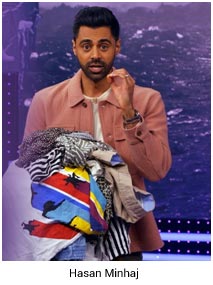
A very interesting episode by comedian Hasan Minhaj in his popular TV series “Patriot Act” is a well-researched piece on “The Ugly Truth of Fashion”. He highlights here how fast fashion is causing some serious damage to the environment. Minhaj points out how Fast Fashion has pushed sustainability into the background, what with brands like Zara and H&M creating nearly 52 seasons for fashion apparel. Many countries that manufacture fast fashion for high street brands are chocking the sustainable story of fashion. Rivers, lakes, seas around the world are often flooded in the toxic waste that spews out from the textile processing mills and garment factories.
SUSTAINABLE DAYS
How knowledgeable are Indians about sustainability and its importance to the environment and India? To send this message to the consumer in 2012 Lakmé Fashion Week (LFW) launched the Indian Textiles Day, which is now known as Sustainable Fashion Day. Twice a year LFW encourages designers from different regions to showcase their sustainable collections. Many talented designers like Paromita Banerjee, Divya Sheth, P.E.L.L.A. etc. along with regional designers have carved a niche for themselves on the sustainable fashion path. In addition, LFW started the Circular Design Challenge from LFW Summer/Resort 2019 that encouraged brands to create garments, footwear and accessories from wastage to help the environment. The FDCI too followed with sustainable fashion shows during its bi-annual fashion weeks.
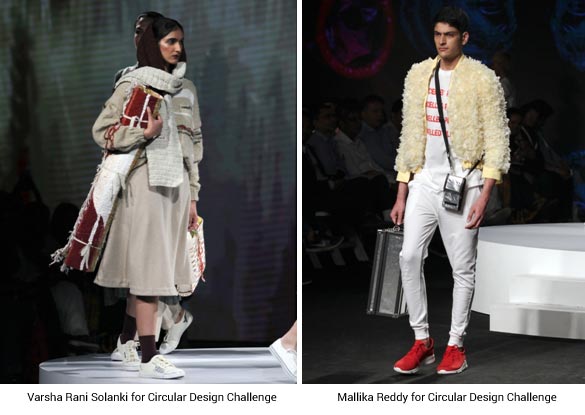
INDUSTRY STALWARTS STATE
While there are numerous authentic certifications given to fabrics and garments, there are still brands that claim to be sustainable. There is no proof that it is not just a fancy word attached to push sales.
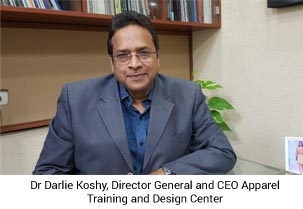
Dr Darlie Koshy, Director General and CEO Apparel Training and Design Center under the Aegis of AEPC gives the definition, “Sustainability is linked to the concept of profit, people, planet or triple bottom line concept for commercial and even non-commercial establishments. Therefore, sustainability is about concern for the ‘planet’ and ‘environment’. In the context of ‘fashion’ education and industry, it is about the ‘waterless printing/dyeing’, ‘zero discharge’ of chemicals, ‘reuse, recycle, slow fashion concept’ etc. Sustainability can be defined as harmony and balance with nature and environment through various methods and planned interventions.”
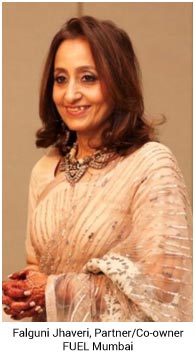
Falguni Jhaveri, Partner/Co-owner Fuel Mumbai, which started in October 2003 adds, “In the Indian fashion context, sustainable production of garments has become a norm in recent times. After the Prime Minister’s “Make in India” campaign garnered attention, designers and consumers alike are turning to homegrown textiles and materials. Since the Vedic ages, Indians have always lived symbiotically with nature, making sure that Mother Earth is respected. Thus, Sustainability in India is deep rooted and should be followed — especially in Indian fashion.”

Yashodhara Shroff, Founder and MD, Ffolio, Bangalore, which was one of first high fashion stores to start in April 1991 remarks, “Sustainable to me is that which is not harming the environment, the culture and society as a whole. Therefore for luxury and fashion to be sustainable, it needs to be addressed right from stage one. In the case of garments, the way the fibre for the fabric is grown, the manufacturing process etc. At each stage we would need to monitor and ensure that the ecological balance is not being disturbed, and efforts are made by citizens to ensure this.”
HOW SUSTAINABLE ARE THE DESIGNERS’ CREATIONS?
From the thousands of designers/brands labels in India there are a few who do ensure that their creations are sustainable.
“Broadly Khadi, Handloom, and Hand Woven Home Linen etc., represent India’s sustainability tradition. Some of the designers have given emphasis on using Indian Handloom fabrics/Saris etc., like Sabyasachi Mukherjee, Krishna Mehta, AnitaDongre etc. Suita Shankar, Anju Modi and Rahul Mishra have been working very closely with weaver clusters to encourage sustainable practices. It is the manufacturing companies and units, who need to look at “Cradle to Grave” and ‘farm to fashion’ sustainability. The designers do not have an overarching role. Denim Jeans/T-Shirt consume large quantities of water certainly harmful to the environment, especially when large number of people are facing water scarcity,” observes Dr. Koshy, while Falguni admits that 25 per cent of the Fuel designers are sustainable.
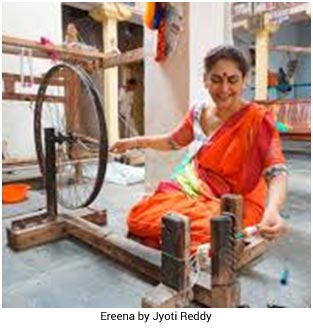
Yashodhara is sure of the Ffolio designers and their claim. “When we embark on a relationship with any designer, we go deep into the history of where and how they produce garments they supply. We make sure that they are ethically sourcing raw materials and are able to maintain an environment where their karigars are well taken care of.Doodlage by Kriti Tula creates beautiful garments from up-cycled fabrics and industrial waste that is slow, ethical fashion, not overpriced but well-liked by our customers forits aesthetics and durability. Ereena by Jyoti Reddy uses Eri, silk that is sustainable, eco friendly, cool in summer, warm in winter and provides livelihood for many weavers.”
IS SUSTAINABILITY JUST A FANCY TAG?
The sustainable tag is often used as an excuse to hike up the price or aim for higher sales to give the buyer a false sense of understanding. Very often, it is not possible for customers to check on the history of the garments from fibre to clothing.
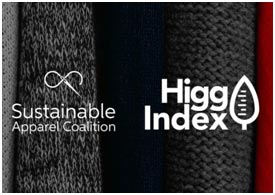
Dr. Koshy however informs, “There is Sustainable Apparel Coalition (SAC) and Higgs’ index, which are trying to bring in brands around to firmly commit to the cause of sustainability. It has resulted in the movement of setting up Green Factories in Sri Lanka and Bangladesh. Bangladesh is claiming to have the largest number of Green Factories. This trajectory reflects the steps taken by the Apparel Industry to move towards sustainability I have seen in Brandix factories in Sri Lanka, where full-time ‘Chief Environment Manager’ is placed among the top brass of the company, who keeps a close watch on water consumption, humidity, power consumption, decarbonisation and various other aspects, on a continuous basis, reporting to the top management.Obviously, this cannot come without additional costs incurred by the company. So a premium of 15 to 20 per cent will be in order and it is for the discerning consumers to pay the same and therefore, I do not think that ‘hefty’ is the right word but ‘Premium’ on sustainable products is a necessary evil.”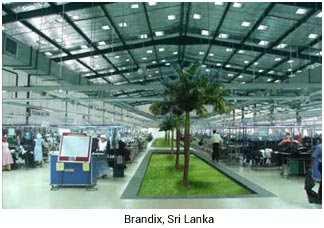
Yashodhara confirms that it has not been the experience with Ffolio designers and Falguni adds, “On the contrary, designers are able to bring down their cost of production and overheads when they produce sustainably, making it easier for them to price their garments more sensibly. This, in turn will see sustainable fashion competing heavily with mainstream established brands in the long run.”
HOW SUSTAINABLE WILL CLOTHING BE IN 2020?
 As the pandemic peters out, how will the fashion scene be in 2020 and beyond is the question that is on everyone’s minds.
As the pandemic peters out, how will the fashion scene be in 2020 and beyond is the question that is on everyone’s minds.
Dr. Koshy reveals, “Philip Kotler in a recent article has envisaged that the consumers are likely to re-evaluate their requirements and reassess their priorities. He has identified five types of customer groups and the major message is ‘simplification of life’ and ‘extending the life cycle of products’. Therefore, India has a big opportunity for riding the wave of sustainability as consumers are rapidly changing their sentiments and predilections. ‘Slow Fashion’ ‘Medical Textiles’, Hygiene and Health related fashion and products would be in demand. Already Fashion Masks and PPE are in great demand around the world. Garments which provide protection through anti-viral, anti-bacterial and various other treatments will certainly gain more and more prominence.”
ARE CUSTOMERS CONSCIOUS OF SUSTAINABILITY?
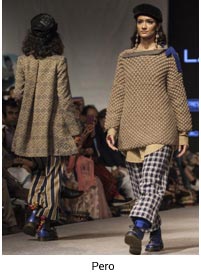 Will customers be more conscious in future when they buy garments or will fast fashion shopping once again take over? According to Falguni, “Customers are more conscious now than ever before. Customers are becoming more aware of the global climatic ramifications of unethically source and produced textiles. Fashion weeks in India over the last few years have seen a surge of sustainable designers, some of whom even create art out of waste products from textile factories.”
Will customers be more conscious in future when they buy garments or will fast fashion shopping once again take over? According to Falguni, “Customers are more conscious now than ever before. Customers are becoming more aware of the global climatic ramifications of unethically source and produced textiles. Fashion weeks in India over the last few years have seen a surge of sustainable designers, some of whom even create art out of waste products from textile factories.”
Yashodhara also concurs as she says, “Yes most customers today are very aware about our environment. Covid-19 has been a huge wakeup call. People realise the need for sustainability. Everyone I know is trying to do their bit.”
GRASS ROOTS SUSTAINABILITY
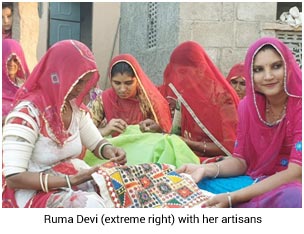 Truly following the sustainable path is Ruma Devi, President of Gramin Vikas Evam Chetna Sansthan in Rajasthan whose brilliant efforts have given 22,000 women a livelihood by using their craft and embroidery skills. For Ruma Devi Sustainability has been a way of life since her childhood. “Today people keep using the word sustainable but this word has been part of our DNA for centuries. Our work starts from the grassroots level where everything is handmade without harming the environment and our artisans are given their just dues. Our crafts are carefully preserved and although we move with the trends, the planet gets respect and not harmed.”
Truly following the sustainable path is Ruma Devi, President of Gramin Vikas Evam Chetna Sansthan in Rajasthan whose brilliant efforts have given 22,000 women a livelihood by using their craft and embroidery skills. For Ruma Devi Sustainability has been a way of life since her childhood. “Today people keep using the word sustainable but this word has been part of our DNA for centuries. Our work starts from the grassroots level where everything is handmade without harming the environment and our artisans are given their just dues. Our crafts are carefully preserved and although we move with the trends, the planet gets respect and not harmed.”
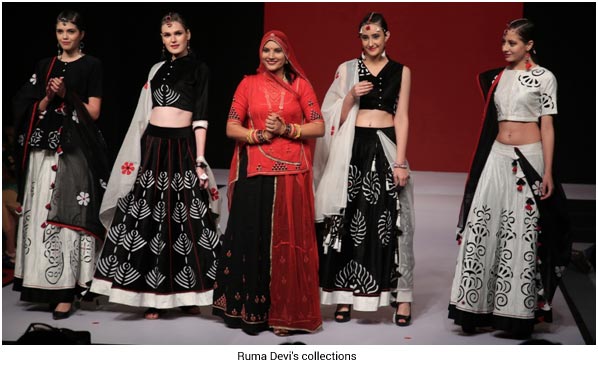
GEN NEXT INITIATIVE
 What is encouraging is that the young talents emerging from fashion institutes are giving attention to sustainability. Tushara Kothapally, graduate from Pearl Academy’s Fashion and Media Communications course has created a wonderful programme called “EcoEdit”, which will be the start of a much-needed initiative.
What is encouraging is that the young talents emerging from fashion institutes are giving attention to sustainability. Tushara Kothapally, graduate from Pearl Academy’s Fashion and Media Communications course has created a wonderful programme called “EcoEdit”, which will be the start of a much-needed initiative.
“‘EcoEdit’ is an idea that was conceived in the realisation that the fashion industry has an undeniable role in climate change. It is one of the most polluting industries, which will soon take up a quarter of the world’s carbon budget. Without consistent and rigorous efforts from the fashion brands, suppliers, policymakers and the government, the world might not succeed at reaching its climate action goals.
This is very difficult to achieve given the current business models and the supply-to-demand ratios of the fast-fashion brands. It is not the lack of green initiatives, which is the problem but rather the sheer number of unregulated environmental-friendly initiatives and sustainability claims made by the brands. Fashion brands are  making impressive environmental commitments for the planet but not enough information about the follow-up is publicly disclosed. Transparency ensures accountability. Every consumer has the right to have access to the sustainability information of a brand and its products but the lack of an overarching international standard, lets the brands create their own standards/definitions to make empty ‘green claims’ that have no credibility. The schemes, reports, which are credible, published by different environmental organisations, are often extensive, difficult to access and understand.
making impressive environmental commitments for the planet but not enough information about the follow-up is publicly disclosed. Transparency ensures accountability. Every consumer has the right to have access to the sustainability information of a brand and its products but the lack of an overarching international standard, lets the brands create their own standards/definitions to make empty ‘green claims’ that have no credibility. The schemes, reports, which are credible, published by different environmental organisations, are often extensive, difficult to access and understand.
‘EcoEdit’ is an app that curates easily understandable information from various credible sources to create a single platform where consumers can analyse and compare their favourite brands’ environmental/social impacts as well as find information about the eco-labels, environmental organisations the brands are associated with to make better purchase decisions,” reveals Tushara Kothapally.

